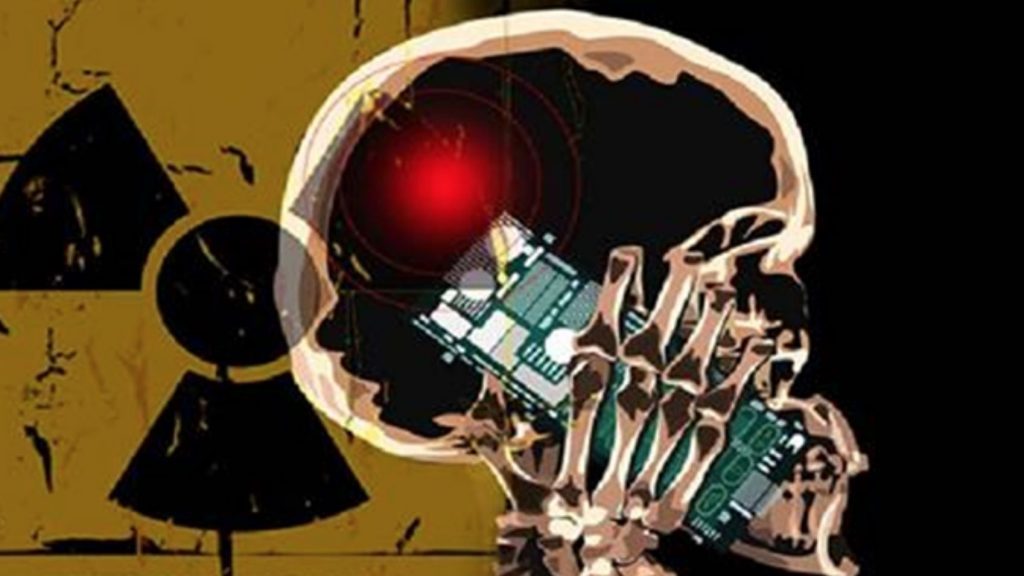A preliminary report from the U.S. National Toxicology Program has found that male rats exposed to high levels of the type of radiation cellphone’s emit developed tumors.
A new report from the U.S. government is likely to create further debate regarding whether or not cellphones and other mobile devices pose a cancer risk to humans. According to a draft report from researchers the United States National Toxicology Program (NTP), male rats exposed to high levels of radiation similar to that emitted by cellphones developed tumors in the tissue surrounding their hearts. The report also found that female rats and mice exposed to the same amount of radiation did not develop tumors. Reuters first reported on the release of the preliminary report.
Reuters reports:
However, NTP scientists and the U.S. Food and Drug Administration (FDA) were quick to say the findings could not be extrapolated to humans and that current safety limits on cellphone radiation are protective.
The 10-year, $25 million studies – the most comprehensive assessments of health effects and exposure to radiofrequency radiation in rats and mice to date – do raise new questions about exposure to the ubiquitous devices.
The NTP study involved exposing rats and mice to higher levels of radiation for longer periods than is typically experienced by the average cellphone user. Researchers also exposed the entire body of the rats and mice to this high dose of radiation. The report concluded that cellphones typically emit lower levels of radiation than the maximum allowable level. Interestingly, John Bucher, a senior scientist with NTP, told Reuters that the tumors seen in the studies are “similar to tumors previously reported in some studies of frequent cellphone users.”
A statement from the American Cancer Society said the findings of the studies are inconclusive. “For example, the newly released results show little indication of an increased risk of tumors or any other health problems in mice exposed to RFR,” the ACS wrote. “Also, the male rats exposed to RFR in the study lived, on average, significantly longer than the male rats who were not exposed. The reasons for this are not clear.”
The ACS also noted that the study has not yet been peer reviewed by outside experts. Peer review is expected in March. Dr. Otis Brawley, chief medical officer of the American Cancer Society, called the evidence for association between cell phones and cancer “weak”, pointing to an apparent lack of higher cancer risk in humans. “But if you’re concerned about this animal data, wear an earpiece,” Brawley stated.
The US Food and Drug Administration released a statement affirming their support of the current safety limits as “acceptable for protecting the public health.”
To be clear, this is not the first time studies examining the dangers of radiofrequency devices such as cellphones and microwaves have caused controversy. Studies in both Australia and India have found that men who use their cellphones most often had lower sperm counts than those who used cellphones less often. In addition, in 2011, the World Health Organization’s International Agency for Research on Cancer classified radiofrequency radiation emitted by cellphones as “possibly carcinogenic to humans.”
There are also studies which have concluded there is no risk of cancer or other illnesses from the radiation released by cellphones. An 18-month study from Denmark compared cancer rates in 360,000 cell phone users to adults without cellphone subscriptions and found no connection to brain or spinal cord tumors.
More recently, in late 2017 it was revealed that the California Department of Public Health had issued internal guidelines on how to reduce exposure to cellphone radiation. The guidelines included keeping the phone away from bed at night, removing headsets when not on a call, and reducing streaming of audio or video on cellphones. The guidelines were released to the public as the result of a lawsuit filed by Dr. Joel Moskowitz of UC Berkeley. Moskowitz sued the California Department of Public Health after they failed to release information about potential dangers of cellphones back in 2009. “Currently we’re not doing a good job in regulating radiation from these devices. In fact, we’re doing an abysmal job,” Moskowitz told CBS San Francisco.
In response to the release of the guidelines Dr. Karen Smith of the California Department of Public Health recommended users keep the cellphone “at least arm’s length away from your body” and not carrying the phone in your pockets. Smith said the CDPH does not believe cell phones are carcinogens, but rather, “that the science is evolving.”
Derrick Broze is an investigative journalist and liberty activist. He is the Lead Investigative Reporter for ActivistPost.com and the founder of the TheConsciousResistance.com. Follow him on Twitter. Derrick is the author of three books: The Conscious Resistance: Reflections on Anarchy and Spirituality and Finding Freedom in an Age of Confusion, Vol. 1, Finding Freedom in an Age of Confusion, Vol. 2 and Manifesto of the Free Humans.
Derrick is available for interviews. Please contact Derrick@activistpost.com
Support us at Patreon. Follow us on Facebook, Twitter, Steemit, and BitChute. Ready for solutions? Subscribe to our premium newsletter Counter Markets.
This article may be freely reposted in part or in full with author attribution and source link.


I’m sure 5g will fry us all.
“However, NTP scientists and the U.S. Food and Drug Administration (FDA)
were quick to say the findings could not be extrapolated to humans and
that current safety limits on cellphone radiation are protective.”
If the study results hold through peer review than the statement that the current safety limits are protective is FALSE. The current safety limits only protect from heating (thermal effects). The design of this study ensured that there would be no heating. Therefore if there is a significantly statistical increase in heart cancer from exposure to RF radiation using levels that do not heat then there are negative non-thermal biological effects to exposure to RF radiation and the public is not protected by current FCC guidelines.